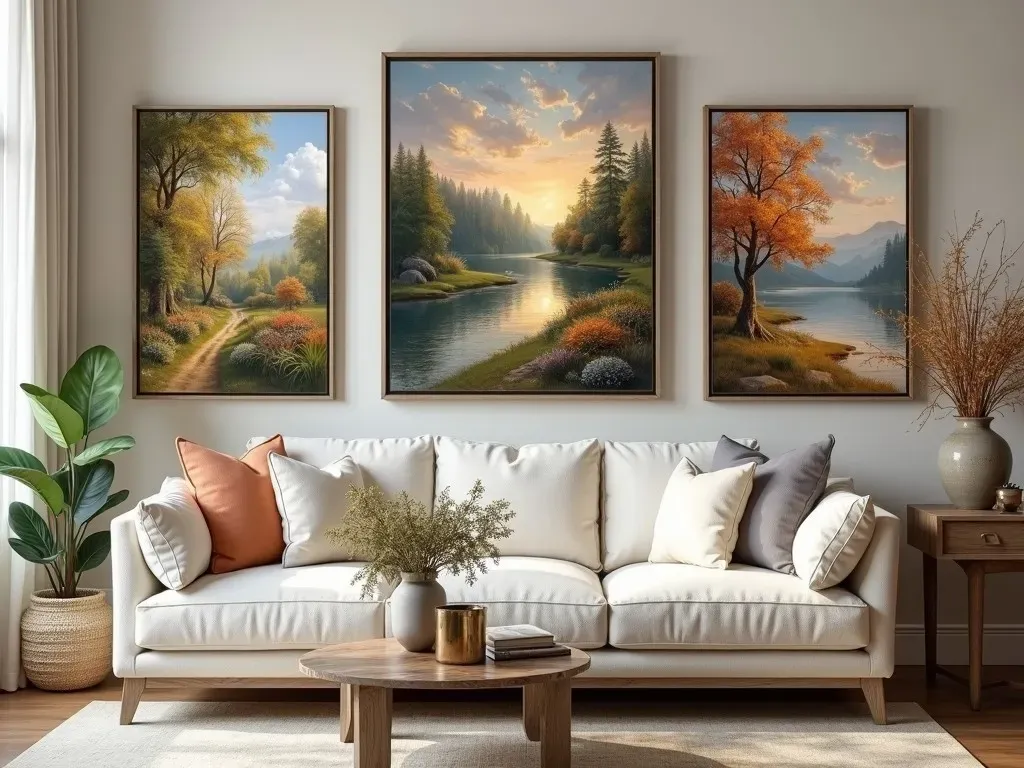Framed oil paintings are more than just decorative items; they are windows into the souls of artists and moments captured in time. These artworks have found a significant place in homes, businesses, and galleries around the globe, offering not only aesthetic appeal but also a way to express individuality and taste.
The Allure of Framed Oil Paintings
Framed oil paintings have been cherished for centuries. The vibrant colors and textures made possible by oil paint bring a unique depth and richness that easily capture attention. Notably, framed oil paintings on canvas are a popular choice and can suit various decor styles, from classic to contemporary.
Facts and Figures on Oil Paintings
The appeal of framed oil paintings can be seen in their sales figures and demand:
| Category | Market Share (%) | Growth Rate (2023-2027) |
|---|---|---|
| Original Oil Paintings | 35% | 4.5% |
| Reproduction Oil Paintings | 45% | 3.8% |
| Framed Art Paintings | 20% | 5.1% |
According to industry reports, the global market for wall art is expected to reach significant figures by 2027, with framed oil paintings leading the category. This growth is driven by rising disposable incomes and growing appreciation for art.
Why Choose Framed Oil Paintings?
- Versatility: They complement various interior styles, enhancing both modern and traditional spaces.
- Quality: These artworks often use high-quality materials, ensuring longevity and color vibrancy.
- Investment: Original oil paintings can appreciate in value over time, making them a smart investment.
- Emotional Connection: Art evokes feelings and memories, and framed oil paintings can create a warm and inviting atmosphere.
Best Places to Buy Framed Oil Paintings
Whether you’re looking for framed oil paintings for sale, or seeking specific oil painting framed art pieces, there are several platforms where you can find quality options:
- Etsy: A hub for unique, handmade art pieces, offering a diverse range of framed oil paintings.
- Amazon: An extensive selection of framed oil paintings across various styles and prices.
- Wayfair: Great for home decor shopping with numerous options for framed paintings.
- Overstock Art: Offers pre-framed reproduction oil paintings at competitive prices.
Top Trends in Framed Oil Paintings
- Modern Abstracts: These pieces utilize bold colors and imaginative themes, aligning perfectly with contemporary décor.
- Nature Scenes: Landscapes and floral designs remain popular, bringing the outdoors inside.
- Classic Still Life: Timeless arrangements of fruits, flowers, and everyday items continue to captivate collectors and enthusiasts alike.
| Trend | Popularity | Description |
|---|---|---|
| Modern Abstracts | High | Featuring bold colors and forms. |
| Nature Scenes | Moderate | Capturing the beauty of landscapes and flora. |
| Classic Still Life | High | Timeless representations of everyday subjects. |
Reference Video
Tips for Choosing the Right Framed Oil Painting
1. Consider Your Space
Evaluate the size of the wall where you intend to display the painting. Larger pieces can dominate a room, while smaller works work best in clusters or smaller spaces.
2. Match Your Decor Style
Choose paintings that blend with or complement your existing furnishings and color schemes. For instance, a vibrant abstract can add a pop of color to a neutral room.
3. Frame Selection
The frame itself can significantly impact the overall look of the painting. A richly ornate frame can add a classic touch, while a sleek, minimalist frame suits modern aesthetics.
4. Think About Lighting
Art should be highlighted, so consider how natural and artificial lighting will affect the painting. Proper lighting can enhance colors and textures.
5. Authenticity and Quality
Ensure that you purchase from reputable sellers and check for certifications of authenticity if buying original works.
Maintenance of Framed Oil Paintings
To ensure longevity and preserve the beauty of your framed oil paintings, consider these maintenance tips:
- Avoid Direct Sunlight: Prolonged exposure can fade colors.
- Dust Regularly: Use a soft, dry cloth to remove dust.
- Maintain Humidity: Keep the environment’s humidity levels moderate to prevent damage to the canvas or the frame.
- Professional Cleaning: For expensive or valuable pieces, consider professional cleaning services.
Frequently Asked Questions (FAQ)
What types of frames work best for oil paintings?
Typically, frames that allow for some breathing space, such as floater frames or those without glass, work best as they allow the texture and depth of the paint to be appreciated fully.
Where can I find affordable framed oil paintings?
Websites like Etsy and Oil Paintings offer a range of options that cater to various budgets.
How do I know if a framed oil painting is original?
Look for a certificate of authenticity and ensure you are purchasing from reputable galleries or certified sellers.
Can I frame an oil painting myself?
Yes, framing can be a DIY project. Ensure you follow proper Techniques to avoid damage.
Are oil paintings better than prints?
Oil paintings offer original artistry and unique detail that prints often cannot replicate, making them ideal for collectors and art lovers.
Exploring the vast world of framed oil paintings opens up endless possibilities for personal expression and aesthetic enhancement. Every piece not only tells a story but also enriches the ambiance of any space it inhabits.
